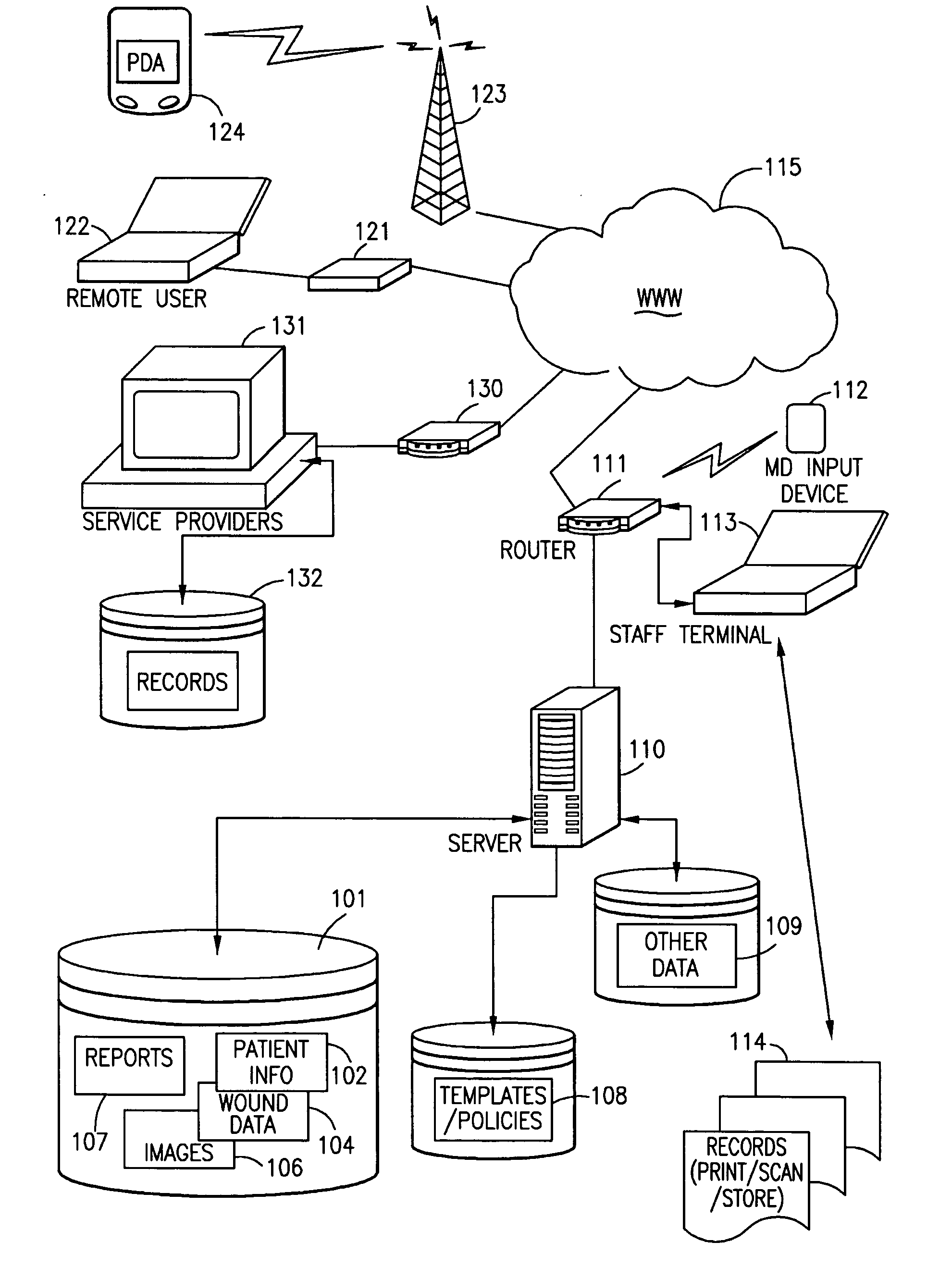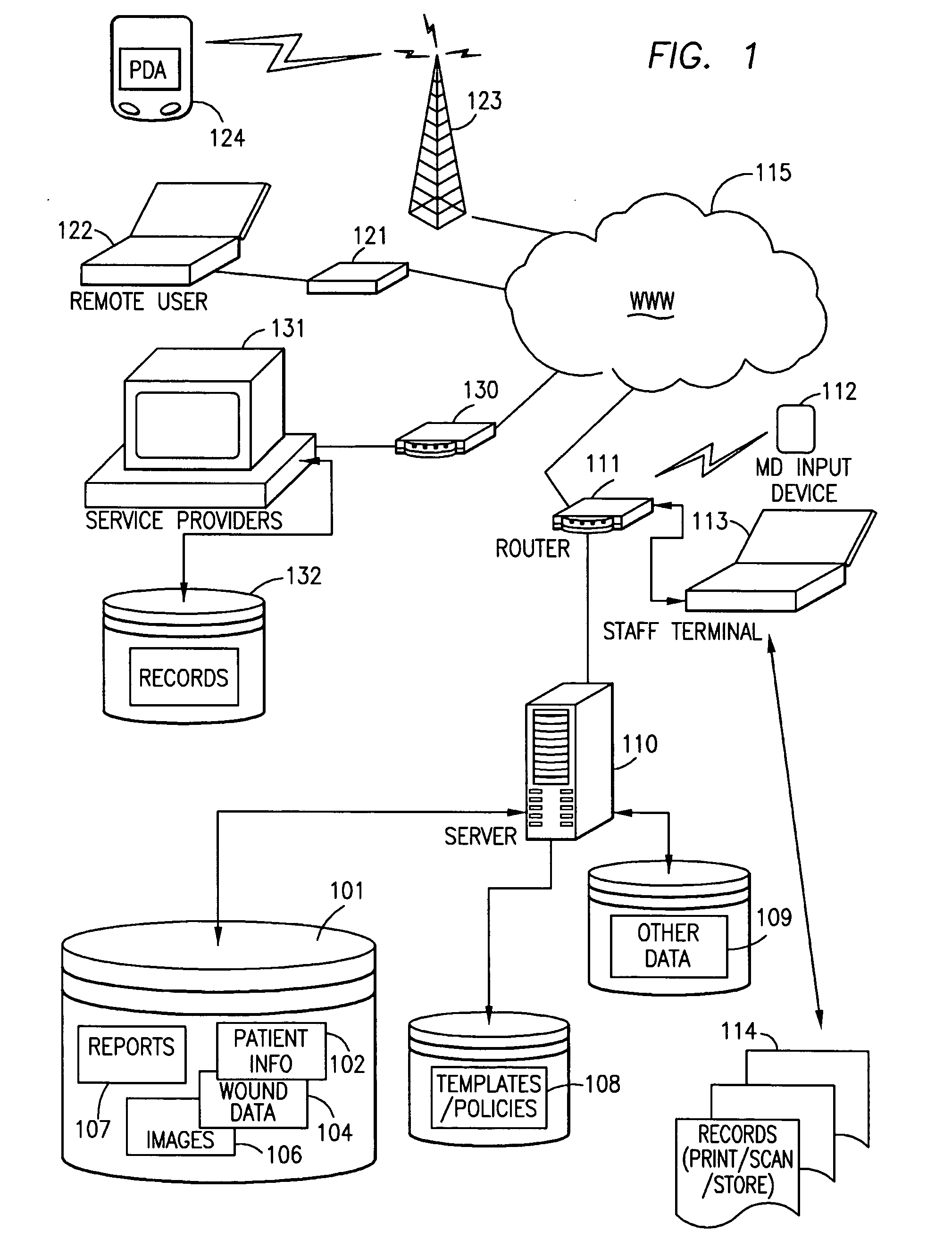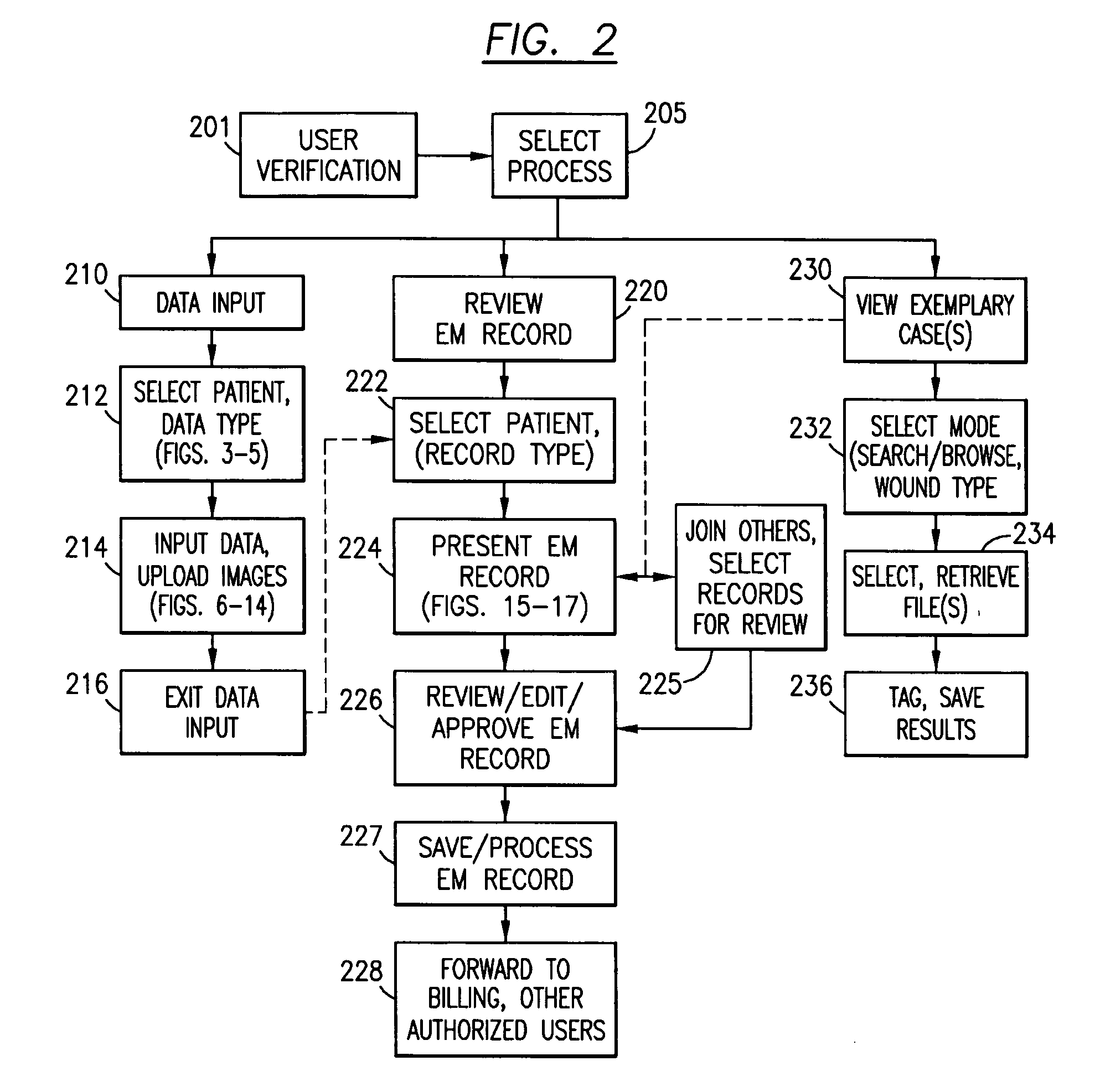Wound electronic medical record system
a medical record system and electronic technology, applied in the field of medical treatment and record systems, can solve the problems of insufficient current standards for data collection and dissemination, insufficient prior approaches dependent on paper and simple electronic record keeping, and insufficient implementation of corrective strategies, etc., to achieve the effect of reducing costs, reducing drainage, and improving studies
- Summary
- Abstract
- Description
- Claims
- Application Information
AI Technical Summary
Benefits of technology
Problems solved by technology
Method used
Image
Examples
example
Pressure Ulcer and Diabetic Foot Ulcer Protocol
[0111] a. Recognition that all patients with diabetes or limited mobility are at risk for sacral, ischial, trochanteric,or heel pressure ulcers. All patients with diabetes and those at risk for localized pressure ulcers (i.e., spinal-cord injured and bed or wheelchair bound patients) should be examined daily in all sacral, ischial, trochanteric, heel, and foot areas. Any new wound (i.e., any break in the skin) requires mandatory and immediate intervention.
[0112] b. Daily examination of the skin on the heels, feet, pelvis, and sacrum in bed-bound patients and those with diabetes.
[0113] c. Initiation of a treatment protocol immediately upon recognition of a new wound. All underlying medical conditions must be treated by the primary care physician, who needs to maintain continuous communication with the patient and other clinicians caring for the patient. Recognition that a chronic wound has an underlying physiological impairment to hea...
PUM
 Login to View More
Login to View More Abstract
Description
Claims
Application Information
 Login to View More
Login to View More - R&D
- Intellectual Property
- Life Sciences
- Materials
- Tech Scout
- Unparalleled Data Quality
- Higher Quality Content
- 60% Fewer Hallucinations
Browse by: Latest US Patents, China's latest patents, Technical Efficacy Thesaurus, Application Domain, Technology Topic, Popular Technical Reports.
© 2025 PatSnap. All rights reserved.Legal|Privacy policy|Modern Slavery Act Transparency Statement|Sitemap|About US| Contact US: help@patsnap.com



